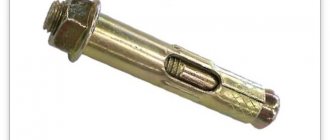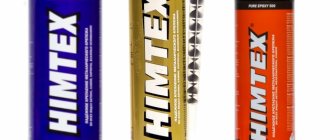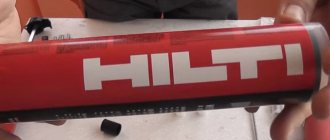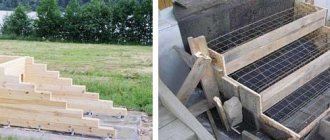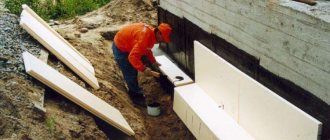An anchor is a fastening element popular in the construction field, which is fixed at the base of a structure and holds the elements connected to it.
Now it is difficult to imagine how it would be possible to secure a heavy structure in a relatively loose or fragile foundation. Dowels are poorly suited for this purpose, as they are weakly held at the base. It’s not worth talking about nails or screws. Therefore, anchors are an ideal option for such work as attaching a heavy chandelier to the ceiling, installing a horizontal bar on the wall, attaching exercise equipment to walls and ceilings, etc.
Different types of anchors are designed for different types of foundations. There are no universal elements that can be used in all cases.
Let us list the types of anchors and give them general characteristics:
Concept, purpose and use of anchor fasteners
An anchor is a type of fastener that is driven, screwed or inserted into the base and is capable of not only being fixed in it, but also holding an additional structure.
Translated from German, anchor means “anchor”. In terms of the way they act on the base, fasteners of this type really resemble an anchor - the working part of the anchor, when fastened, expands and holds the connection to the base.
Fasteners of this type are used when working with hard base materials - concrete, brick, natural stone. The anchor allows you to hold fairly massive structures or structures that are subject to dynamic loads, for example, plumbing fixtures, air conditioners, wall-mounted televisions, sports equipment, suspended ceilings, etc.
Expert opinion
Torsunov Pavel Maksimovich
The versatility and reliability of the anchor connection allows them to be used when working with other materials. For example, there are anchors for fastening in porous and lightweight materials, for connecting furniture elements. This type of fastening connection has found its application even in dentistry - an anchor pin is fixed in the root canal of the tooth and serves as a support for a filling or microprosthesis.
Requirements and instructions for installing foundation bolts
According to operating conditions and GOST requirements, fasteners must be divided into two more types:
- The design anchor transfers the load from operating equipment to the foundation.
- Structural hardware ensures stable functioning of mechanisms, preventing shifts during operation.
The codes provide detailed guidance on securing process equipment with foundation bolts. The installation process cannot be called difficult. This work can be done independently if you have the appropriate equipment.
- First of all, you need to mark the mounting locations. To do this, use the floor plan. These devices are used exclusively under the condition of constructing permanent walls.
- Afterwards, the formwork is constructed and the concrete base is poured. Without waiting for the material to completely dry, foundation bolts are installed in the concrete.
- There should be approximately 6 cm above the surface of the cement base.
- The threaded connection is wrapped in special materials that additionally protect the metal.
- Anchor hardware must be level and vertical.
- Foundation bolts 1 1 should form a block.
The design of anchors, unlike other fastening connections
A classic anchor is a combined metal structure consisting of a non-expandable (body or base) and an expansion (working) part. The base can be a bolt, screw, pin or nail, the spacer part can be in the form of a sleeve, cone, sleeve, etc. When using a fastener, the working part expands and, due to friction and resistance of the material, holds the structure in the base material.
The main difference between an anchor and a dowel that is similar in design and purpose is the material of manufacture. A dowel consists of a soft part, usually plastic, in which a fastening element, for example a self-tapping screw, is fixed. The principle of fastening the dowel is based solely on the frictional force between the working surface of the fastening joint and the base.
Since the anchor is usually made of alloy steel or other metals (brass, aluminum), its fastening principle is based not only on friction between the main and working parts, but also on the resistance of the material. Anchors are able to withstand more severe dynamic loads than fastening joints using dowels.
Permissible loads
The working loads of all types of anchor fasteners should be no more than 25% of the maximum pull-out load when used in concrete with a strength of 200-250 kgf/cm2 (corresponding to concrete grades M200 and M250). As the strength of concrete increases, the recommended load of fasteners increases proportionally. If there are cracks in the concrete, the pull-out load is multiplied by a factor of 0.6.
Marking of anchor bolts
When planning to use anchor bolts for concrete, you need to learn how to determine the dimensions by markings. Let's figure out how the abbreviation stands for the example of a fastener with the designation M8 10/35x90:
- The alphanumeric designation M8 indicates the thread diameter;
- the number 10 corresponds to the diameter of the drill for making a cavity in concrete;
- the number 35 indicates the maximum thickness of the attached material;
- the number 90 characterizes the minimum depth of the hole for installing the anchor.
Knowing how anchor bolts are marked, it is easy to select fasteners to perform a specific task.
Classifications
Anchors are classified according to service life:
- Permanent.
- Temporary.
By size, fasteners are divided into:
- Small (up to 5.5 cm long and up to 0.8 mm in diameter).
- Medium (up to 12 cm long and up to 1.2 cm in diameter).
- Large (up to 22 cm long and up to 2.4 cm in diameter).
According to the base material, anchors are distinguished:
- For dense concrete, brick or stone materials.
- For hollow brick and concrete foundations.
- For sheet materials - plasterboard, chipboard and fibreboard.
According to the method of fastening, the following are distinguished:
- Mechanical
Fastening is carried out due to the direct mechanical effect of the working part of the anchor on the base (wedging, friction, stop, material resistance, etc.).
- Chemical
Additionally, a gluing mechanism (force) is used; for fastening, adhesive based on polyester resins is used.
What anchor do you use?
ChemicalMechanical
Mechanical anchors according to the technique of insertion into the base are divided into the following types:
- Wedges.
- Spacers.
- Hammers.
- Screw.
- Bushings.
- Expandable.
- Spring.
Spacers
Expansion anchors are a classic type of this type of fastener. They are a rod in the form of a bolt or pin with a cone-shaped end and an external element in the form of a sleeve, bushing or spring ring. The conical element, under the influence of the translational movement of the rod, expands the sleeve and secures the structure in the base.
Expanding
An expansion anchor consists of a threaded rod, which can be a bolt, stud or screw, and a sleeve consisting of 4 longitudinal petals with a spring ring and a cone nut on one side. When the rod rotates, the cone nut unclenches the sleeve petals, as a result of which the anchor expands and is secured in the base due to friction.
Wedge
Wedge fasteners are a long rod, at the end of which there is a deformation sleeve. After screwing the rod into the drilled hole, the sleeve petals expand. This type of fastener can withstand heavy loads.
Spring
Spring anchors are used when working with thin-walled bases, for example, when arranging the interior. Often, spring anchors are used as ceiling anchors and are equipped with a hook. The anchor is secured by unrolling the spring.
Screw
Screw anchors, or Molly bolts, are used when working with hollow structures with low load-bearing capacity - hollow brick, plasterboard, particleboard and fiberboard, etc. The Molly bolt is equipped with a special collet, which, when the bolt is tightened, opens and rests against material on the reverse side.
Bushing
Sleeve-type anchors consist of 3 or more elements, the main one of which is the collet - a spring split sleeve. The sleeve anchor design also includes a riving element and a threaded rod. When the anchor is twisted, the wedging element enters the collet and pushes it apart, thereby securing the fastener to the base.
Drivers
The basis of the driven anchor is a metal deformation sleeve with a conical hole, cuts in the body and internal threads. A firing pin is installed at the bottom of the sleeve. The sleeve is installed into the drilled hole manually or using an air gun. When the outer end of the sleeve is struck, it is deformed, after which a bolt or pin is screwed into the sleeve, necessary for fastening any object.
Expansion anchors
Expansion anchors are more often used for fastening heavy structures (metal doors). These are metal cylindrical bushings with grooves on the body. When the nut is tightened with a wrench, the bushing expands over the entire surface and rests closely against the base material.
The advantage of these anchors is their ability to withstand heavy loads in the perpendicular and longitudinal directions.
Basic designs of mechanical anchors
According to their design, mechanical anchors are also divided into the following main types.
Bolt and nut
The simplest type of spacer fastener, which is a rod (bolt) with a conical end, a sleeve with four cutouts and a nut. The nut acts as a lock - with its help the structure is fixed in a pre-drilled mounting hole, the diameter of which is equal to the diameter of the sleeve. After driving the rod into the hole, the nut is turned clockwise, thereby moving the rod outward. The tapered end of the pin expands the sleeve in the area of the cutouts, thereby securing the structure in the hole.
Anchor bolts are available in various sizes: the diameter of the rod is from 6 to 28 mm, the length is from 60 to 300 mm. Anchor bolts are used when working with dense materials (concrete, brick, stone).
Bolt with ring
Ceiling anchor, usually used for attaching lamps, chandeliers to the ceiling, cables, electrical cables, suspended ceilings, etc. Fasteners of this type, as an exception, can also be used on walls.
The only difference between such a fastener and an anchor bolt with a nut is that its outer end ends with an eyelet, which is necessary for hanging a hinged device or product. Fastening of such a structure is carried out in a similar manner: the fixing nut, located directly behind the end in the form of a ring, allows you to open and fix the sleeve in the hole.
Hook bolt
A fastener in the form of a bolt having a hook-shaped head. Used for fastening heavy structures to solid concrete, stone or brick foundations. The principle of fastening is similar to other connections in the form of a bolt with a nut - after tightening the fixing nut, the sleeve is deformed and secured in the drilled hole.
Hex Bolt
An anchor of this type is analogous to a bolt with a nut, but here a standard bolt is used instead of a rod (stud) and nut. When the bolt is tightened with a wrench, the tapered end deforms the sleeve, thereby filling the walls of the hole and securing the structure in it. Also available in a screwdriver version.
Double-spacer
Double Expansion Mechanical Anchors - Another expansion bolt and nut. The difference is that the design uses two sleeves (bushings, couplings) - short and long. The short one goes inside the long one with its cone-shaped end. When the nut is screwed in, the short sleeve expands with the cone-shaped end of the rod and, in turn, expands the long sleeve. Double-expansion anchors can also have a ring or hook end. Anchors of this design are used to increase the reliability of fastening.
Nails
Nail-type anchors are used when working with brick, concrete and stone foundations and are intended for fastening lightweight structures. They have the shape of a hollow nail, inside of which a wedging element is placed. The anchor is driven into the hole manually or using a power tool.
Anchor bolt sizes for concrete
The diameter of the threaded part and the length of metal anchors vary depending on the purpose:
- steel fasteners with metric threads with a diameter of up to 12 mm and a length of no more than 20 cm are used mainly when private owners carry out repair work;
- fasteners with an increased thread diameter of up to 20 mm and a length of up to 35 cm are used for industrial purposes for fixing heavy structures.
The following parameters depend on the dimensions of the concrete anchor bolt:
- maximum thickness of fixed elements. Depending on the type of fastener, it is 1.5–6 cm;
- maximum size of the load-bearing surface. It ranges from 5 to 30 cm for different anchor options.
The design features of the clamps and their dimensions also affect the level of pull-out load, which ranges from 1.5 to 30 kN.
Wedge anchor bolt with nut 12x100 mm
Chemical
Chemical anchors are a type of fastening elements that, in addition to frictional force and material resistance, also use adhesive force through the use of synthetic resins.
This provides additional fixation. Chemical fasteners are used when securing particularly heavy structures or when working with porous and soft materials.
Expert opinion
Torsunov Pavel Maksimovich
The chemical anchor is usually a standard stud. After drilling the hole, its walls are blown out and covered with adhesive, after which the anchor is inserted. The disadvantage of chemical anchors is that they cannot be used immediately; you must wait until the adhesive reaches maximum strength.
What types of anchors are there, their design and applications
If you need to secure a large or heavy structure to a brick or concrete wall, use anchors. Unlike dowels, they are designed for increased load.
To choose the right fasteners that will support the weight of a heavy object and not lead to cracks in the wall, you need to know what types of anchors exist to perform different tasks.
In land management
Anchor products made of plastic have found application in land management and are used to strengthen banks, construct road embankments and pipelines.
Fastening elements have increased impact resistance and frost resistance, and are able to withstand the effects of groundwater, hazardous chemicals and corrosion.
Plastic fasteners are T-shaped and range from 60 to 120 centimeters in length. When driving into the ground and installing the ATP clip, the fastening elements are connected by a polymer cable and form a three-dimensional geogrid.
Dental anchor pins
Anchoring is also used in dentistry for endodontic treatment and dental prosthetics. Reinforced pins, manufactured in accordance with the anchor system, are placed inside the root canal of the tooth and strengthen the root of the tooth and its visible part. Thus, tooth prosthetics occurs, preventing bacteria from accessing the root system and resisting mechanical stress that can destroy the tooth.
A dental pin is attached to a tooth like an anchor and comes in several types:
- Active - they form a groove on the channel stacks due to the presence of threads; fastening occurs due to friction.
- Passive - attached using fixing cement.
- Semi-active - fastened with cement and threads on a limited part of the pin.

